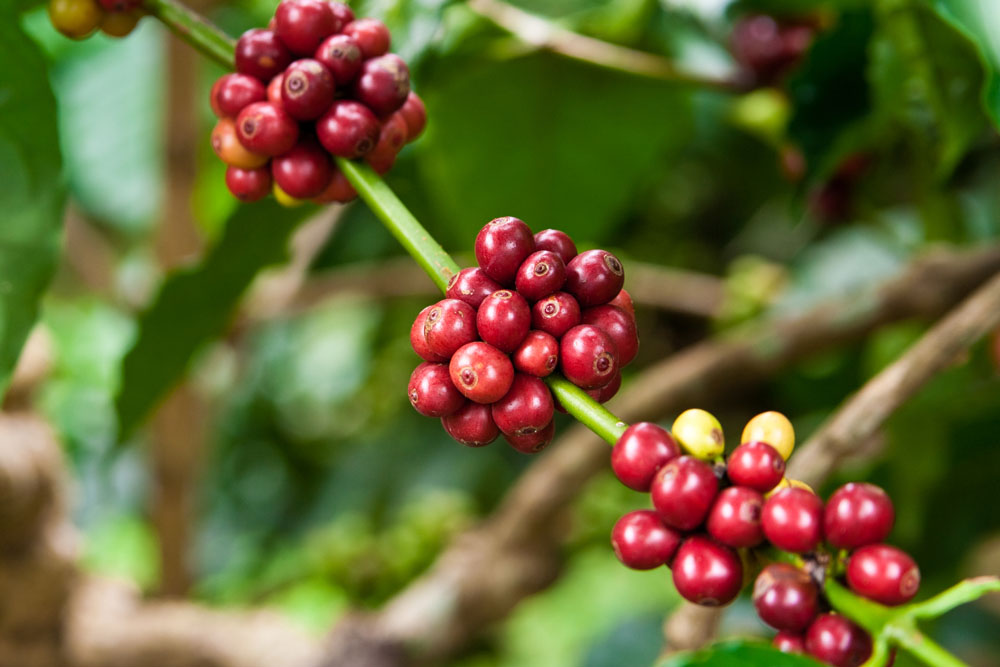Japan, a big coffee country in the world: president Humanity Yamashita of Japan teaches you to know mixed coffee.

order
Think carefully, those casual use of coffee terms we actually do not know what they mean. Why mix coffee beans? What is the purpose of roasting coffee beans? How to make a cup of coffee with strong fragrance, rich layers and bitter sweetness? What do the world's most prestigious coffee producers have in common? Let's follow in Mr. Matsuura's footsteps and ask coffee lovers one by one!
Title: Yang/YW Translator: Zhang Ming/Revision: Yang/Art: Fu Xiaomeng/Editor: Zhao snail/Comprehensive: An Mi, Katsu, Mu Zhiye
How much do you know about blended coffee?
Just as all taverns have beer,
All the set meals have white rice,
Blended coffee is indispensable to tea houses throughout Japan.
But why is it called "coffee blend",
Why mix coffee?
? With such doubts in mind, we visited Masahiko Yamashita, president of Yamashita Coffee, a supplier of coffee specialty shops.
"In the world of rice, products with name and brand names are clearly marked, some sold separately, some mixed. Coffee is the same. One coffee alone may be too bitter and have little personality, so it needs to be mixed with other coffees to soften the taste and add flavor." In addition, when new beans are on the market, they are mixed with old beans to maximize the retention of their respective flavors.
"Most countries receive coffee beans from July to September each year, when the new beans may have some differences in taste. In order to balance the taste as much as possible, different producing countries will mix the coffee beans of the previous year with the new beans of this year."
What about premium coffee beans? "The main purpose of blending premium coffee beans is not to cover up each other's flaws, but to create new and unique flavors and aromas," said Hiroyuki Onozuka, executive director of specialty coffee shop Horiguchi Coffee.
Regular coffee beans and premium coffee beans also differ in the purpose of blending. It is precisely because high-quality coffee beans are cultivated by designated producers and are famous, so they can reach a higher level.

? So how many shops make their own coffee blends?
"It's hard to say if this kind of shop accounts for 10% of the total…" Mr. Yamashita said.
Huh?
"As far as teahouses are concerned, there are basically no people who make mixed coffee by themselves." Mr. Onozuka added. But this is not absolutely true. Specialists do not mix and bake. Tea houses and cafes concentrate on extraction. Perhaps this is what we often say about division of labor and cooperation, each doing his job. In order to serve delicious coffee to the guests, everyone is doing their best.
It is also worth mentioning that the number of teahouses in Japan peaked in 1980, with as many as 150,000, and then gradually decreased to only 70,000, less than half of its heyday. Even so, I think I'll go to the cafe even if the chance to order a blend becomes less and less. Ah, where to go for a drink next time.

One might think that to know what beans taste like, one must chew them. But a bite down, will almost let people teeth knock off, because coffee beans are too hard! And it doesn't smell. In response, Mr. Yamashita of Yamashita Coffee explained: "Without roasting, coffee tastes neither physically nor chemically."
Coffee beans are originally fruit seeds, and the texture is quite hard. Baking removes moisture and makes the internal structure porous, such as spongy, thus increasing the area in contact with hot water and making it easy to smell.
Indeed, no matter how long he sipped the beans he had chewed with great effort, he could not taste them. One wonders where coffee's charming aroma comes from. In fact, there are 650 kinds of aroma components in the main components of coffee. After roasting, smoky flavor and pungent smell increase, acidic smell and sweet roast taste will increase for a short time and then decrease, while the taste of coffee beans themselves will not change much. Roasting gives coffee aroma unlimited possibilities.

"Roasting brings out the acidity, bitterness, and aroma of coffee. Although the quality and potential of the beans themselves play a big role in coffee taste, it is no exaggeration to say that roasting is where the soul lies. Even in the so-called traditional craft shops, the methods and techniques of baking vary greatly."
By the way, by Japanese standards, Italian roast is deep, followed by French roast, but in fact European roast is not so deep. "When the Japanese tried to explore coffee, they probably misunderstood Italian coffee when they came into contact with the mellowness of it. In northern Italy, light baking is dominant, while deep baking is popular in the south. So baking is a lot more complicated and important than we thought. Whether it's exaggeration or accident, we at least understand that baking comes first.

giver
Left: Masahiko Yamashita
Chairman of Yamashita Coffee, a 90-year-old coffee wholesaler, trusted by famous shops such as Chating Hetang in Shibuya.
Right: Yuyuki Onozuka
Executive Director of "Horiguchi Coffee", a specialty store that specializes in importing coffee beans, roasting coffee beans, and coffee shop operations.
Source: YayaWorld
Important Notice :
前街咖啡 FrontStreet Coffee has moved to new addredd:
FrontStreet Coffee Address: 315,Donghua East Road,GuangZhou
Tel:020 38364473
- Prev

Japan, a big coffee country in the world: a detailed introduction to the comparison of Humanity coffee brands in Japan
If we think about it carefully, we have no idea about the coffee words we use inadvertently on weekdays. Why mix different coffee beans? What is the purpose of roasting coffee beans? A cup of mellow, rich layers, bitter sweet coffee after all how to refine? What is the common connection between the world's most prestigious coffee bean producers? Let's follow in Mr. Matsuura's footsteps.
- Next

World Fine Coffee beans: an introduction to Sumatran Mandheling in Sumatra
[introduction] the history of coffee cultivation in Sumatra began in the 18th century, and the origin of the name Mantenin itself is very ethnic. The famous producers of Asian coffee are the islands of the Malay Archipelago: Sumatra, Java, Kalimantan (formerly Borneo Borneo), Sulawesi and Sulawesi.
Related
- Guji coffee producing area of Guji, Ethiopia: Humbela, Shakiso, Wulaga
- What is the most expensive variety of Qiloso in BOP multi-variety group?
- How to store the coffee beans bought home?
- Why are Yemeni coffee beans so rare now?
- Ethiopian Sidamo all Red Fruit Sun Sun Santa Vini Coffee beans
- SOE is mostly sour? What does it mean? Is it a single bean? what's the difference between it and Italian blending?
- Is Italian coffee beans suitable for making hand-brewed coffee?
- How to choose coffee beans when making cold coffee? What kind of coffee beans are suitable for making cold coffee?
- Just entered the pit to make coffee, what kind of coffee beans should be chosen?
- Can only Japan buy real Blue Mountain Coffee? What are authentic Jamaican Blue Mountain coffee beans?

